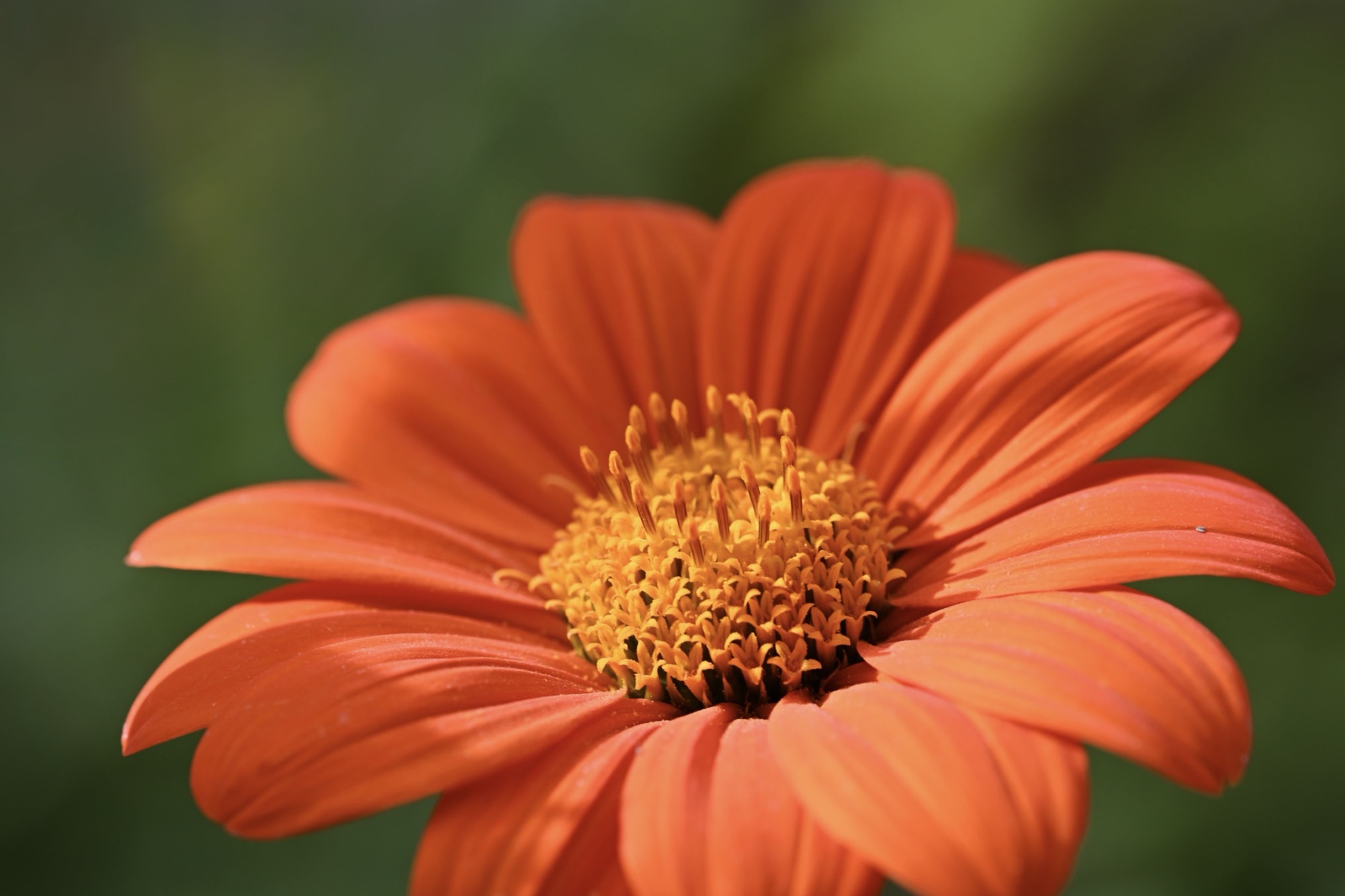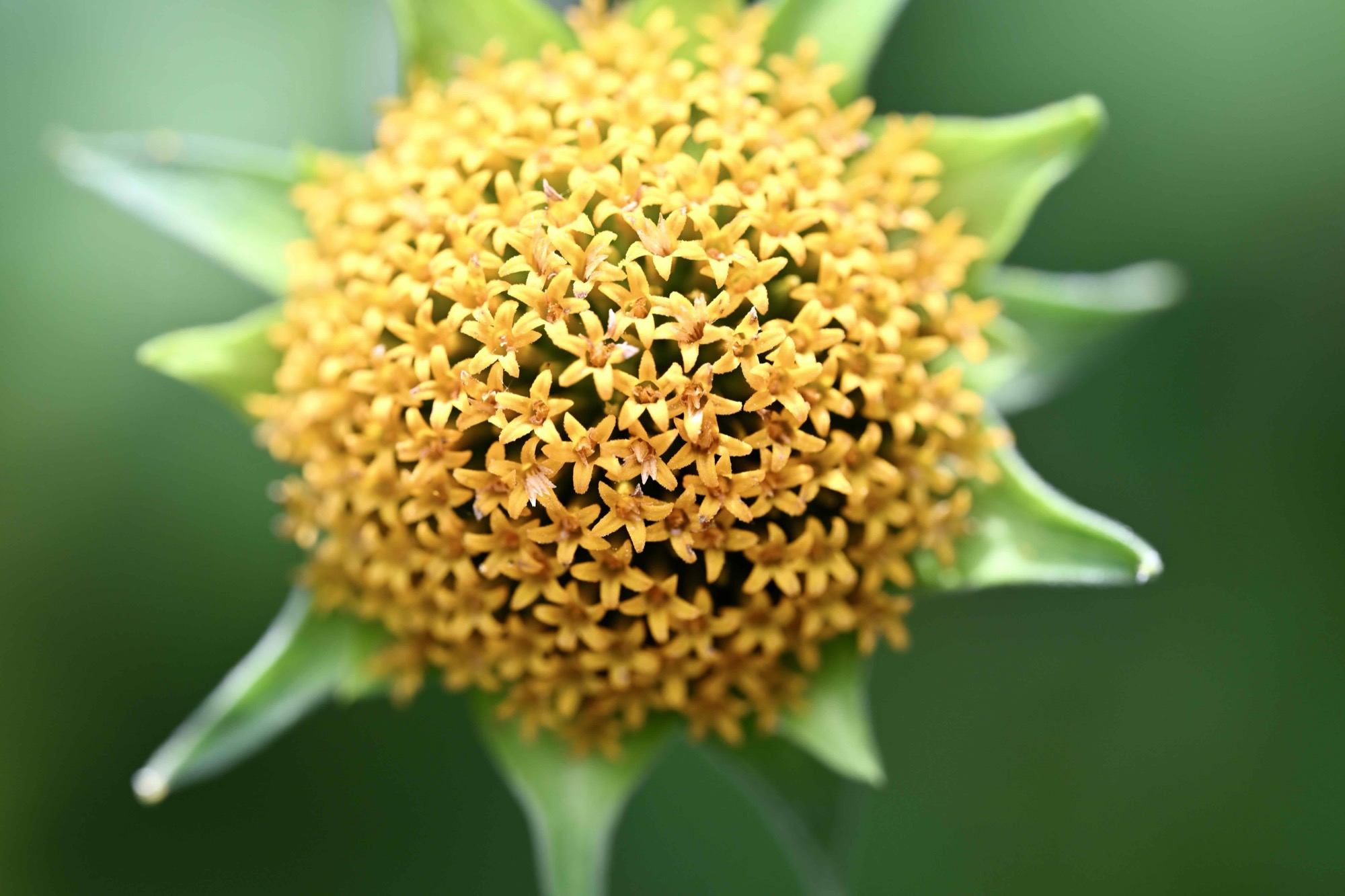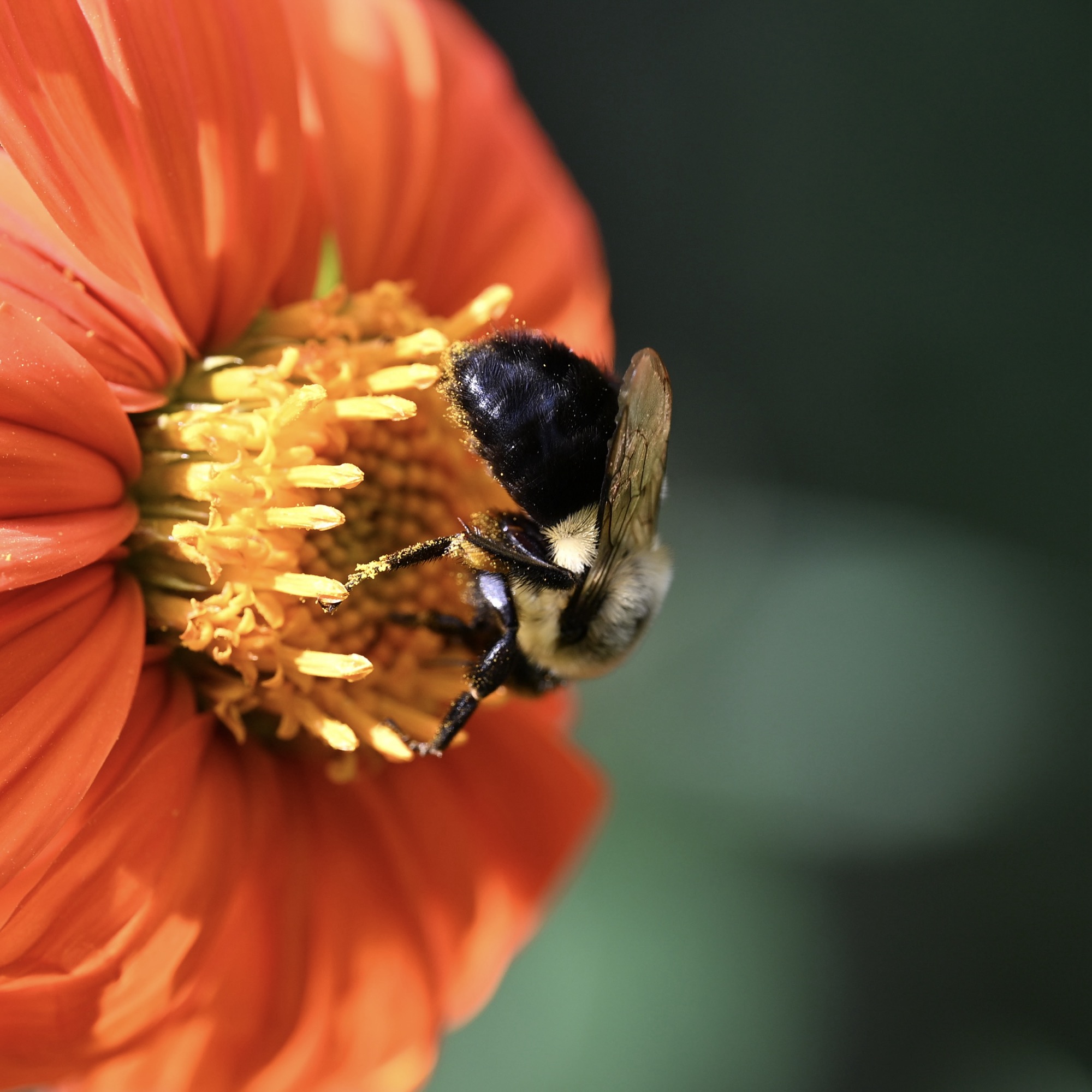Mexican Sunflowers, Tithonia rotundifolia, became the centerpiece of my garden this summer. Their deep orange petals and tall, architectural stems formed a vivid border, and their blooms lasted long into October. The species is native to Mexico and Central America, where it grows as a warm-season annual, but it adapts well to northern climates. Gardeners often praise it as one of the best plants for attracting bees and butterflies. After growing them myself for a couple of years now, I understand why.
I started about two dozen plants from seed in late spring. Last year I grew seven plants, but this year I went big and planted a whole row of them. They sprouted quickly and grew into towering, 6–8 foot structures that seemed to stretch taller by the day. Each blossom sits on a curved, upward-reaching stem that forms a fluted cup at the base, giving the plant a candelabra-like silhouette. The scale of the plants was part of the charm. Despite their size, they were easy to maintain and thrived in full sun with little intervention beyond watering and occasional support in windier corners of the yard. They were not picky about soil, and seemed to thrive in even the rockiest, dry areas.

Monarch butterfly enjoying a sip of nectar. Photo by Cassidy Arden. 105mm f/2.8.
By July, the flowers had become a daily meeting place for native bees. They moved methodically across each bloom, legs dusted with bright yellow pollen. Eastern Giant Swallowtails also visited, drifting between the Mexican Sunflowers and the northern prickly ash trees that grow in the woods behind my house. Later in the season Monarch butterflies arrived and treated the plants like rest stops. During late August and early September, when nectar sources in my area start to dwindle, the Monarchs seemed to rely heavily on the Tithonia patch. They fed for all day in busy, fluttering groups, as they prepared for their migration south.

Mexican sunflower with petals. Photo by Cassidy Arden. 105mm f/2.8.

Mexican sunflower, without petals. Photo by Cassidy Arden. 105mm f/2.8.
Although Tithonia is not native to Vermont, it fills an important ecological niche in the garden. Its blooms persist well into early fall and continue producing nectar long after many summer flowers have faded. Late-season resources are essential for migrating butterflies and for native bee species completing their final foraging before winter. Beyond its role as a nectar plant, the spent stalks and foliage break down into a nutrient-rich, spongy mulch that is useful for adding moisture and bulk to compost piles. Some gardeners even grow Tithonia specifically to cut it down and return the biomass to the soil.

Bee in the Mexican sunflower patch. Photo by Cassidy Arden. 105mm f/2.8.

Bee with pollen on legs. Photo by Cassidy Arden. 105mm f/2.8.
This project also became a chance to practice with my macro lens. The 105mm f/2.8 macro lens requires patience. Depth of field becomes razor-thin at close distances, and even a small breeze can shift a subject out of focus. Working with it forced me to think carefully about timing, angle, and light. It reminded me of why I enjoy photography. It blends technical problem solving with creative choices, similar to the balance I appreciate in programming. I have fun with this lens every time I use it.

Monarch butterfly perched on a Mexican sunflower. Photo by Cassidy Arden. 105mm f/2.8.
I plan to grow Mexican Sunflowers again next year. They are a plant that gives more than they take. They ask for very little and return so much in beauty, color, structure, and ecological value. For anyone hoping to support pollinators, especially late in the season, Tithonia rotundifolia is a rewarding option.